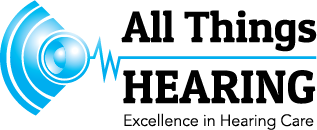Are you looking for a Comprehensive Hearing Test Browns Plains?
Ready to take the first step towards better hearing?
Let’s talk!
Connect with us today! Fill out the contact form below to schedule your personalised hearing consultation at All Things Hearing. Our expert team is committed to guiding you on your journey to improved hearing health. Don't wait to enhance your quality of life. Reach out now – we're here to listen and help!
Follow us:
A comprehensive hearing test evaluates multiple aspects of your hearing through specialized assessments. You'll undergo pure-tone audiometry to measure pitch and volume recognition, speech testing to check comprehension, and tympanometry to examine middle ear function. Your audiologist will also inspect your ear canal and eardrum using an otoscope. The results will determine your hearing status and guide appropriate treatment options. Understanding the full scope of these tests can help you better prepare for your evaluation.
What Is a Comprehensive Hearing Test?
A comprehensive hearing test evaluates multiple aspects of your hearing ability through a series of specialized assessments. During the test, you'll participate in various examinations that measure how well you detect different sound frequencies, understand speech in quiet and noisy environments, and process auditory information.
The testing typically includes pure-tone audiometry to check your hearing thresholds, speech recognition tests to assess your ability to understand words, and tympanometry to examine your middle ear function. Your audiologist will also inspect your ear canal and eardrum using an otoscope. These tests help identify the type and degree of hearing loss you may have, whether it's conductive, sensorineural, or mixed, and determine the most appropriate treatment options for your specific condition.
Common Signs You Need a Hearing Test
While comprehensive hearing tests provide detailed insights into your hearing health, recognizing when you need one is the first step to addressing potential problems. Watch for signs like frequently asking people to repeat themselves, struggling to follow conversations in noisy environments, or turning up the TV volume higher than others prefer. If you find yourself reading lips more often or having difficulty understanding phone conversations, these could indicate hearing loss.
You might also notice that certain sounds seem muffled, or you're experiencing ringing in your ears (tinnitus). If family members comment that you're speaking too loudly or you're feeling more socially isolated because group conversations are challenging, it's time to schedule a hearing test. Don't ignore unexplained dizziness or ear pain, as these symptoms warrant professional evaluation.
Types of Hearing Tests and Procedures
Several common hearing tests help audiologists diagnose and evaluate your hearing ability. The pure-tone test measures your ability to hear different pitches and volumes through headphones. During speech testing, you'll repeat words played at various volumes to assess your speech recognition. Tympanometry examines your middle ear function by measuring eardrum movement using air pressure.
Your audiologist might also perform otoacoustic emissions (OAE) testing, which checks your inner ear's response to sound, and acoustic reflex testing to evaluate how well your ears protect themselves from loud noises. If needed, they'll conduct auditory brainstem response (ABR) testing to examine how your brain processes sound signals. These tests are painless and typically take 30-60 minutes to complete.
Understanding Your Test Results
Once your hearing test is complete, you'll receive an audiogram – a graph showing your hearing levels across different frequencies. The results are plotted on a chart where the horizontal axis represents frequency (pitch) in Hertz, and the vertical axis shows loudness in decibels. Normal hearing typically falls between -10 and 25 decibels.
Your audiologist will explain where your hearing falls on this scale. If you have hearing loss, it'll be classified as mild (26-40 dB), moderate (41-55 dB), moderately severe (56-70 dB), severe (71-90 dB), or profound (91+ dB). They'll also indicate whether your hearing loss is conductive (outer/middle ear), sensorineural (inner ear), or mixed. This information helps determine the best treatment options, from hearing aids to cochlear implants.
Treatment Options After Your Hearing Test
After receiving your hearing test results, you'll discuss personalized treatment options with your audiologist. Common solutions include hearing aids, cochlear implants, or assistive listening devices based on your specific hearing loss pattern and lifestyle needs.
If you're diagnosed with mild to moderate hearing loss, modern hearing aids come in various styles, from nearly invisible in-ear models to behind-the-ear options. For severe hearing loss, cochlear implants might be recommended. Your audiologist may also suggest protective measures to prevent further damage.
Some cases might require medical intervention, such as removing ear wax buildup or treating underlying infections. You'll also learn about communication strategies and environmental modifications that can help you navigate daily situations more effectively while adjusting to your hearing devices.
Preparing for Your Hearing Assessment
To get the most accurate results from your hearing test, proper preparation is essential. Don't expose yourself to loud noises for at least 16 hours before the test, as this can temporarily affect your hearing sensitivity. Remove any earwax buildup by visiting your doctor a few days prior if needed.
On the day of your assessment, arrive 15 minutes early to complete paperwork and bring your medical history, including medications you're taking. Make sure to bring your insurance information and a list of specific hearing difficulties you've experienced. If you use hearing aids, bring them along. Wear comfortable clothing and avoid bulky jewelry or high collars that might interfere with the headphones used during testing.
Disclaimer
The content on our site is purely for education and should not be seen as an endorsement or recommendation of any treatments or products without a thorough hearing assessment and evaluation. Before starting any treatment, users should get advice from a professional and be fully aware of any potential side effects or risks related to the procedures. Any products we mention cannot be purchased by the public without first consulting a hearing health expert.
